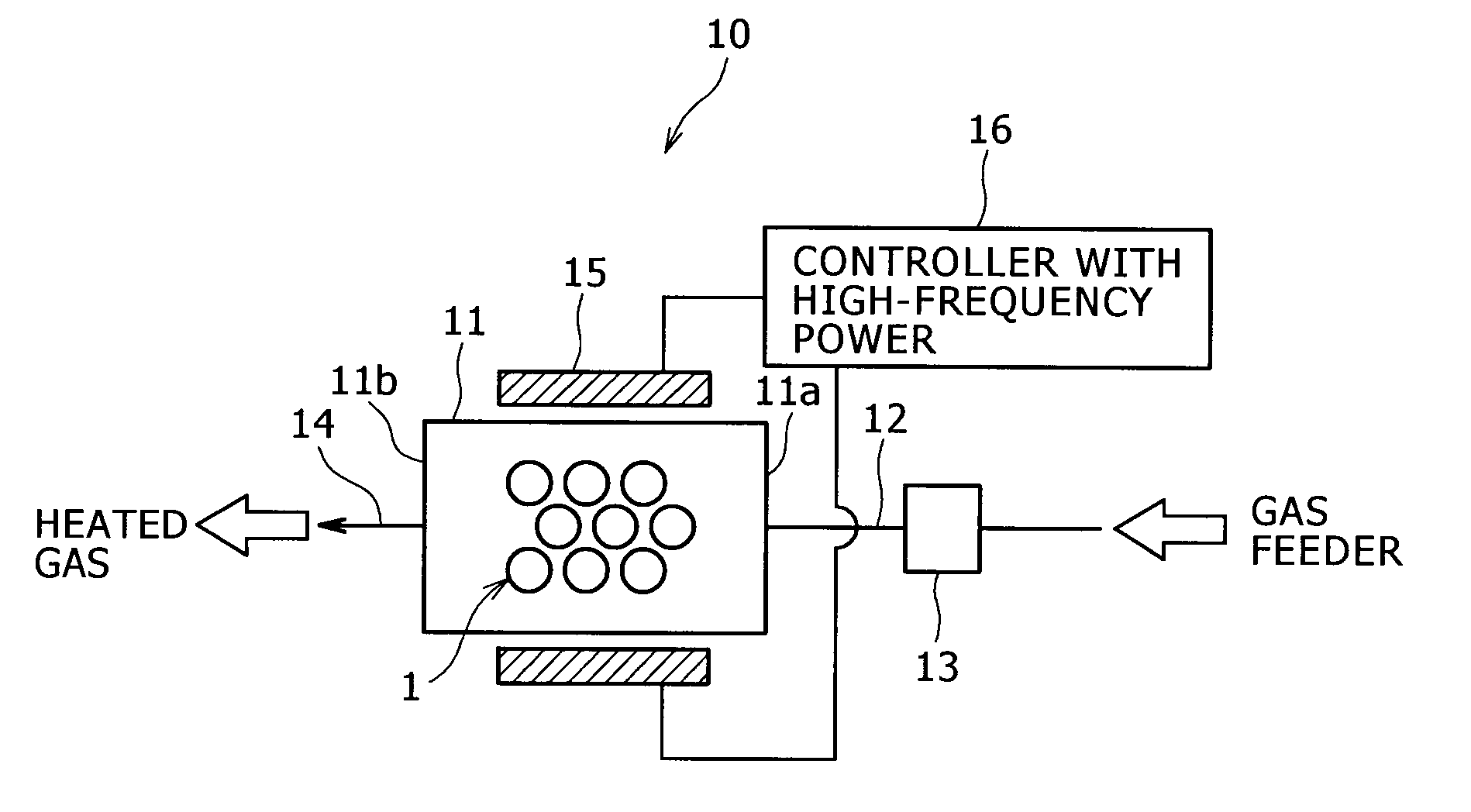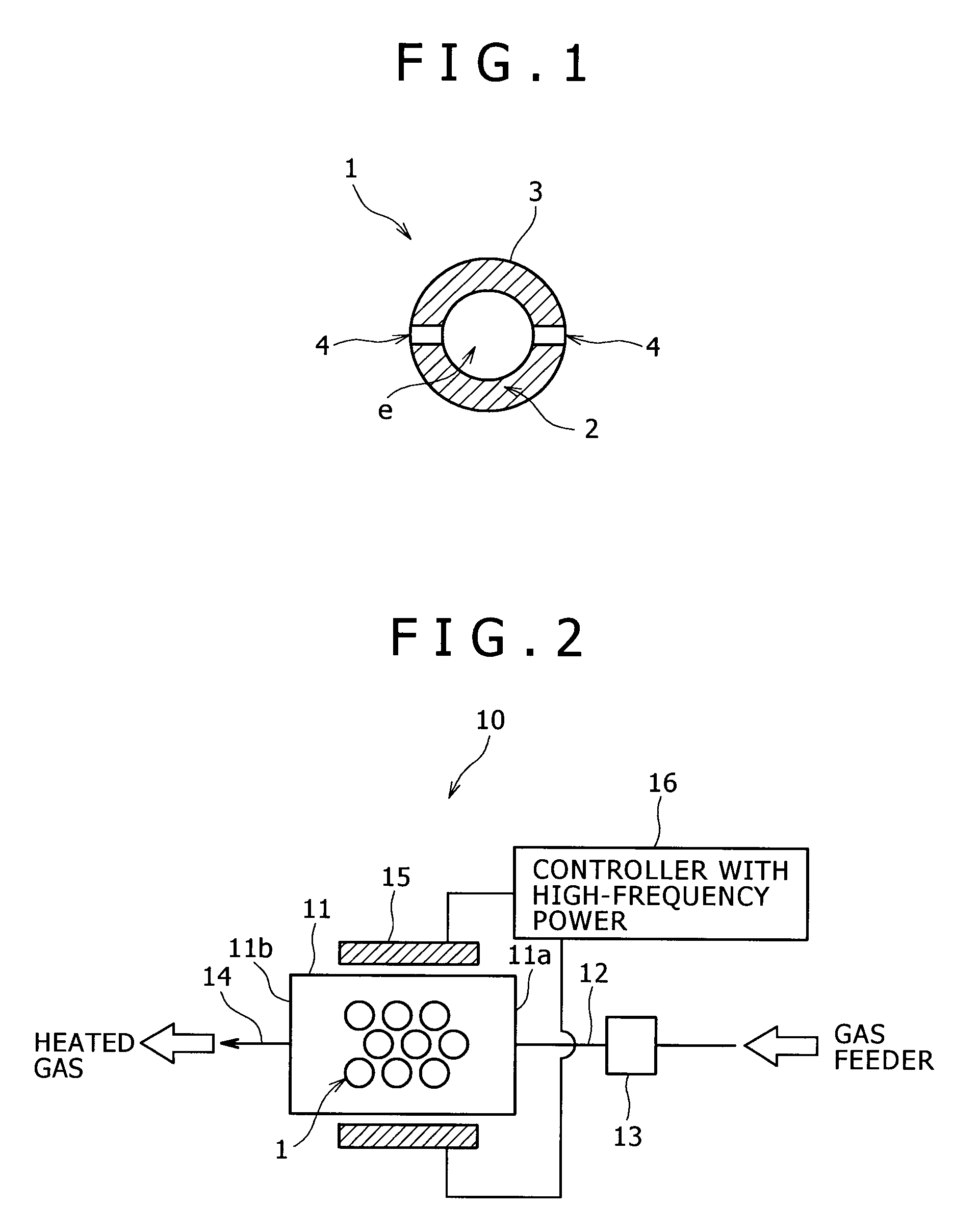Inductive heating element
a heating element and inductive technology, applied in the field of inductive heating elements, can solve the problems of ineffective heating of gas through holes, difficulty in increasing both inductive heating efficiency and heat exchange effectiveness concurrently, etc., to achieve high heat exchange efficiency, increase heat exchange effectiveness, and increase heat exchange efficiency
- Summary
- Abstract
- Description
- Claims
- Application Information
AI Technical Summary
Benefits of technology
Problems solved by technology
Method used
Image
Examples
example 1
[0060]1-1. Fabrication of Inductive Heating Elements Composed of Glassy Carbon
[0061]Inductive heating elements composed of glassy carbon were fabricated in the following manner using a commercially available liquid phenolic resin (supplied from Gunei Chemical Industry Co., Ltd. under the trade name of PL-4804) as a material.
[0062]Initially, the resin was placed into a mold having a semi-spherical cavity with a radius of 15 mm and was held at 80° C. for twenty hours to semi-cure the resin, followed by removing the mold. Thus, a solid semi-spherical molded phenolic resin article having a radius of 15 mm was obtained.
[0063]Next, the molded article was hollowed to form a semispherical cavity having a radius of 12 mm concentrically with the outer periphery of the molded article. Thus, a semispherical hollow molded phenolic resin article having an outer diameter of 30 mm and a wall thickness of 3 mm was obtained.
[0064]Two semispherical hollow molded phenolic resin articles fabricated as a...
example 2
[0083]A spherical part having an outer diameter 25 mm was cut from a commercially available isotropic graphite material, and a silica layer about 5 μm thick was applied to the spherical part by the procedure of Example 1.
[0084]A steam heating test was conducted using the same flow gas heating system under the same condition as Example 1, except for using the spherical part having an insulating layer. The steam temperature at the outlet of the heating element casing was 325° C., indicating that the steam temperature was elevated through heating by 175° C.
PUM
| Property | Measurement | Unit |
|---|---|---|
| thickness | aaaaa | aaaaa |
| radius | aaaaa | aaaaa |
| radius | aaaaa | aaaaa |
Abstract
Description
Claims
Application Information
 Login to View More
Login to View More - Generate Ideas
- Intellectual Property
- Life Sciences
- Materials
- Tech Scout
- Unparalleled Data Quality
- Higher Quality Content
- 60% Fewer Hallucinations
Browse by: Latest US Patents, China's latest patents, Technical Efficacy Thesaurus, Application Domain, Technology Topic, Popular Technical Reports.
© 2025 PatSnap. All rights reserved.Legal|Privacy policy|Modern Slavery Act Transparency Statement|Sitemap|About US| Contact US: help@patsnap.com


